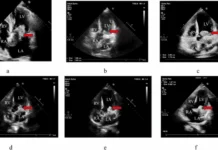The CDC says that a case of tickborne relapsing fever brought on by a specific species of bacteria has been documented in the United States. And for the first time.
The pathogen in concern is Borrelia lonestari, which is unrelated to the germs that cause Lyme disease. However, it has never been identified as the source of this specific ailment.
The rare infection called tickborne relapsing fever is characterized by recurrent fever, headaches, nausea, and pain in the muscles and joints. It is prevalent in the western part of the US and is associated with staying in shabby, vermin-infested mountain cabins. Although B. lonestari has not been identified as the condition’s cause yet, the germs that cause it apparently infect humans when infected “soft ticks” bite them.
Unusual Case of Tickborne Relapsing Fever
An unusual case of a 75-year-old man from Alabama was described last month in the CDC-run journal Emerging Infectious Diseases. The patient described having relapsing fevers, chills, sweating, headaches, dizziness, and fatigue in 2019 for about a month. He acknowledged getting rid of a tick a few weeks before his symptoms started. Fortunately, antibiotics worked to properly treat him.
His blood first tested positive for spirochetes, spiral-shaped bacteria frequently transmitted by ticks, but after months of research, doctors determined that TBRF caused by B. lonestari was the culprit.
B. lonestari was discovered to infect people more than 20 years ago. It was first found in the lone star tick in 1996. Hard ticks are known to spread a close relative of these bacteria known as B. miyamotoi, which is known to cause TBRF.
Study author, Dr Laia J. Vazquez Guillamet said,
This case report sheds light onto the potential of B. lonestari to cause human illness and contributes to the body of knowledge on TBRF,
It is the second tickborne Borrelia species transmitted by hard ticks that has been identified as a causative agent of relapsing fever, being the previous ones [were] transmitted by soft ticks.
However, it should be noted that the patient was on lymphoma drugs. Hence, there is no definitive answer if he developed TBRF because of B. lonestari or because of his medication.
In future years, increased awareness of the pathogenic potential of B. lonestari and the use of molecular diagnostics may give us an approximation about the real burden of human illness caused by this bacterium,




